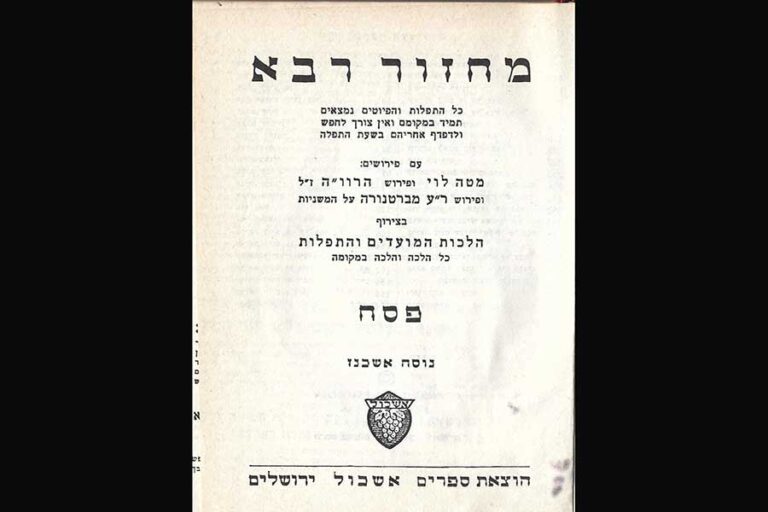For many Ashkenazim, the appearance of the traditional Machzor Rabba is an integral part of the holiday prayer experience. The simple cover and layout of the prayers have made it a widely used machzor in synagogues and homes. Despite its popularity, few remember its earlier versions or the machzor that preceded it over a century ago.
Rabbi Binyamin Zeev (Wolf) Heidenheim (1757-1832) was a linguist and scholar who established a renowned printing press in Roedelheim. He was known for his meticulous attention to detail in producing siddurim, machzorim, and other sacred texts. The Roedelheim siddurim became standard works in matters of custom, grammar, and organization. Heidenheim’s first machzor was printed in the early 1800s, featuring two Ashkenazic versions: Western Europe and Poland-Lithuania.
The machzor was praised for its complete prayers, user-friendly design, customs, necessary halachos, and explanations for difficult words. It also included a German translation of the prayers, omitting sensitive portions. This popular machzor was referenced by prominent poskim, such as the Chasam Sofer, and went through numerous editions during Heidenheim’s lifetime.
One notable edition was published in Warsaw in the early 20th century by A. Cahana, known for its added commentaries and insights. This edition, without the German translation, included additional commentaries from various sefarim and became known as Machzor Rabba.
After WWI, the machzor underwent changes in style, reflecting the influence of Eretz Yisrael. The Jerusalem-based Eshkol press reissued the Machzor Rabba with updated pagination. Subsequent editions retained the original content while adapting to the evolving times.
Despite the emergence of newer machzorim, the Machzor Rabba remains a cherished prayer companion for many. Its enduring legacy and impact on prayer experiences make it a revered tradition in Jewish worship.
This article was originally published on JFeed.com.


